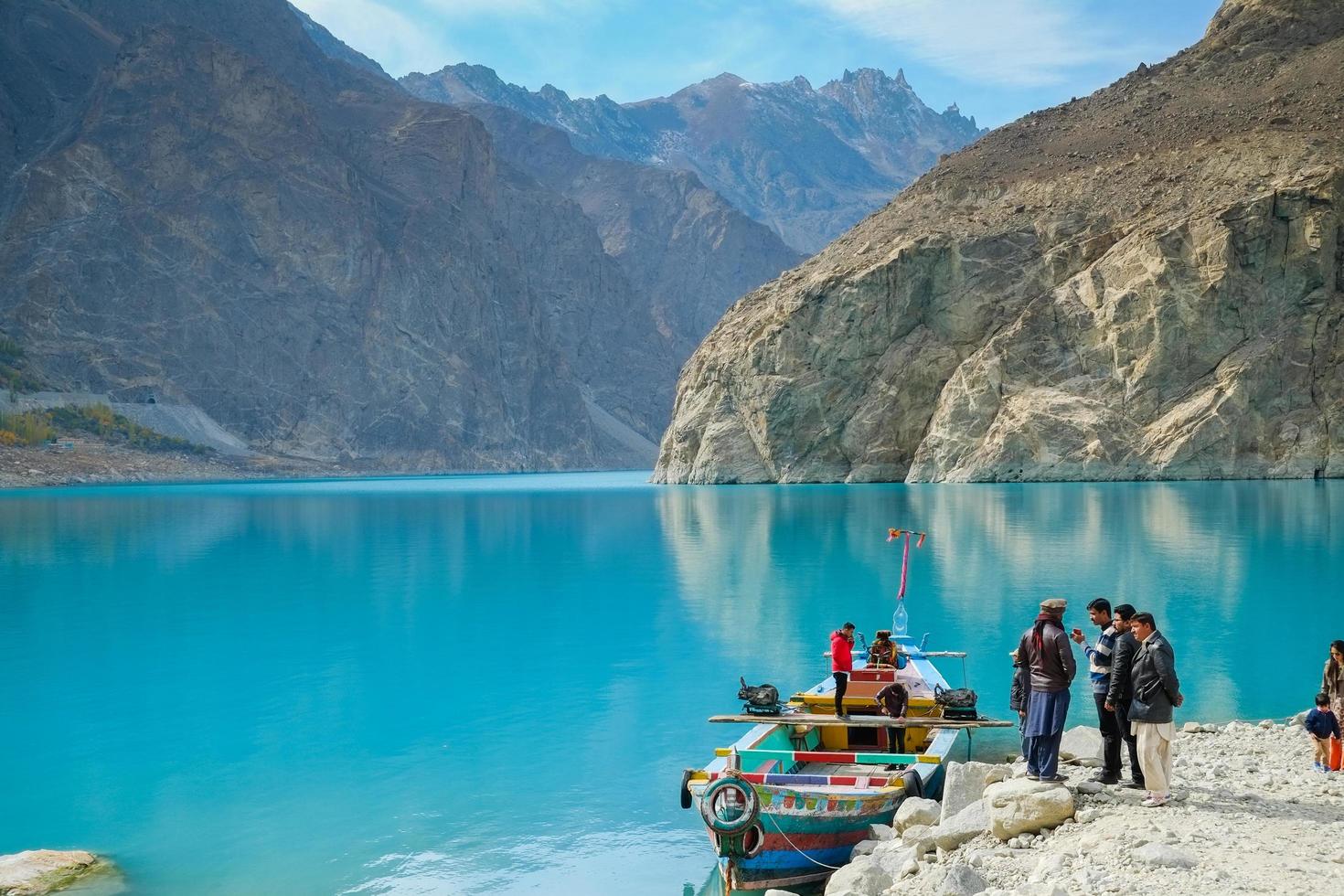By: Liaqat Masih Asher
Nestled amidst the majestic mountains of Hunza, Pakistan, lies the enchanting Atta’abad Lake, a picturesque sight that captivates many with its serene waters and stunning vistas. Yet, beyond its breathtaking facade lies a tale of tragedy and ongoing threat, a reality often overlooked by admirers.
Formed on January 4, 2010, following a devastating landslide that blocked the flow of the Hunza River, Atta’abad Lake emerged as a testament to both nature’s beauty and its destructive power. Stretching over 32 kilometers and holding billions of cubic meters of water, this reservoir is not merely a scenic wonder but a ticking environmental time bomb.
Local residents, intimately acquainted with the lake’s dual nature, bear witness to its perilous implications. For them, Atta’abad Lake represents not just a tourist attraction but a constant source of fear and uncertainty. Memories of displacement and loss loom large, as many families in villages like Shishkat, Payin Abad, and Gulmit Gojal continue to grapple with submerged lands and shattered livelihoods.
During my visit in June 2010, I witnessed lake’s aftermath, recounts nights spent in trepidation at Gulmit Tourist Inn Hotel, situated perilously close to the lake’s edge.
I reckoned, the specter of imminent disaster loomed large, a reminder of the fragility of life in the shadow of nature’s fury.
In response to this ongoing climatic threat, efforts have been made to mitigate the risks posed by Atta’abad Lake. Immediate measures include raising awareness about disaster risk reduction and establishing local disaster management committees. Training in early warning systems and search and rescue operations aims to empower communities to respond effectively to emergencies.
Yet, I noted, that the long-term challenges remain daunting. Addressing the root causes of instability, such as deforestation and unsustainable development practices, requires concerted action and cooperation across governmental and non-governmental sectors. Planting trees to stabilize slopes, enforcing forest conservation laws, and promoting indigenous practices in resource management are crucial steps in safeguarding vulnerable communities downstream.
As Atta’abad Lake continues to cast its spell on visitors and residents alike, it serves as a poignant reminder of the delicate balance between nature’s beauty and its unforgiving force. Only through collective action and foresight can we hope to navigate the waters of uncertainty and ensure a safer future for all who call these lands home.


